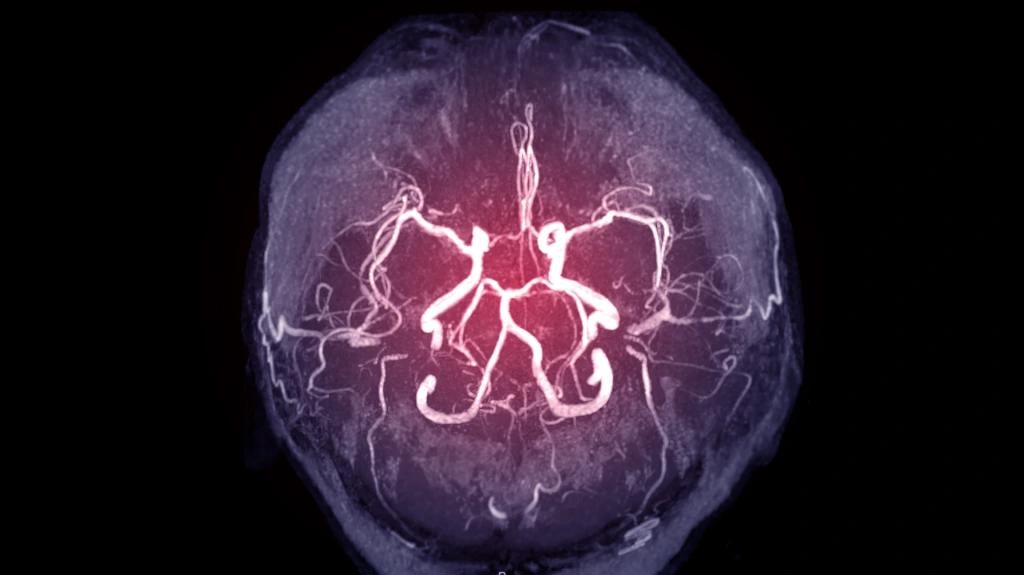Researchers have shown that the brain’s primary auditory cortex is more responsive to human vocalizations associated with positive emotions and coming from our left side than to any other kind of sounds. This bias can be explained by the way our brain is organized, but its evolutionary significance is not yet known.

Image Credit: Frontiers
Sounds that we hear around us are defined physically by their frequency and amplitude. But for us, sounds have a meaning beyond those parameters: we may perceive them as pleasant or unpleasant, ominous or reassuring, and interesting and rich in information, or just noise.
One aspect that affects the emotional ‘valence’ of sounds – that is, whether we perceive them as positive, neutral, or negative – is where they come from. Most people rate looming sounds, which move towards them, as more unpleasant, potent, arousing, and intense than receding sounds, and especially if they come from behind rather than from the front. This bias might have a plausible evolutionary advantage: to our ancestors on the African savannah, a sound approaching from behind their vulnerable back might have signaled a predator stalking them.
Now, neuroscientists from Switzerland have shown another effect of direction on emotional valence: we respond more strongly to positive human sounds, like laughter or pleasant vocalizations, when these come from the left.
“Here we show that human vocalizations that elicit positive emotional experiences, yield strong activity in the brain’s auditory cortex when they come from the listener’s left side. This does not occur when positive vocalizations come from the front or right,” said first author Dr Sandra da Costa, a research staff scientist at the EPFL in Lausanne, Switzerland.
We also show that vocalizations with neutral or negative emotional valence, for example meaningles vowels or frightened screams, and sounds other than human vocalizations do not have this association with the left side.”
Dr Sandra da Costa.
From erotic vocalizations to a ticking bomb
Da Costa and colleagues used functional magnetic resonance imaging (fMRI) to compare how strongly the brain of 13 volunteers responded to sounds coming from the left, front, or right. These were women and men in their mid-twenties, all right-handed, and none were trained in music. The researchers compared the brain’s response between six categories of sounds: besides positive human vocalizations like erotic sounds, they played back neutral and negative vocalizations, like meaningless vowels and a frightened scream; and positive, neutral, and negative non-vocalizations, like applause, wind, and a ticking bomb.
Da Costa et al. focused on brain regions known to be important for the early stages of sound processing: the primary auditory areas A1 and R, the surrounding other early-stage auditory areas and the ‘voice area’ (VA). Each occurs in the left and right hemisphere of the brain.
The results showed that A1 and R in both hemispheres became maximally active when listening to positive vocalizations coming from the left, and much less when listening to positive vocalizations coming from the front or right, to neutral or negative vocalizations, or to non-vocalizations.
Auditory cortex discriminates in favor of positive vocalizations from left
The strong activation by vocalizations with positive emotional valence coming from the left takes place in the primary auditory cortex of either hemisphere: the first areas in the brain cortex to receive auditory information. Our findings suggest that the nature of a sound, its emotional valence, and its spatial origin are first identified and processed there.”
Dr Tiffany Grisendi, Co-author
In addition, area L3 in the right hemisphere, but not its twin in the left hemisphere, also responded more strongly to positive vocalizations coming from the left or right compared to those coming from the front. In contrast, the spatial origin of the sound didn’t impact the response to non-vocalizations.
The evolutionary significance of our brain’s bias in favor of positive vocalizations coming from the left is still unclear.
Senior author Prof Stephanie Clarke, at the Neuropsychology and Neurorehabilitation Clinic at the Lausanne University Hospital said: “It is currently unknown when the preference of the primary auditory cortex for positive human vocalizations from the left appears during human development, and whether this is a uniquely human characteristic. Once we understand this, we may speculate whether it is linked to hand preference or the asymmetric arrangements of the internal organs.”
Source:
Journal reference:
Grisendi, T., et al. (2023) Emotional sounds in space: asymmetrical representation within early-stage auditory areas. Frontiers in Neuroscience. doi.org/10.3389/fnins.2023.1164334.